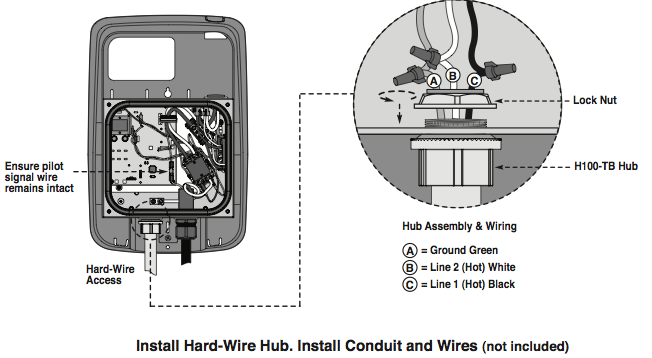shikataganai
Active member
- Joined
- Dec 14, 2012
- Messages
- 40
Could any of you who have electrical experience sanity check this proposed outdoors EVSE wiring setup?
- Leviton EVB40-SPT 40A 240V EVSE, again to be mounted on the outside of the house
- 50 Amp non-GFCI breaker at the box (after upgrading service to allow for this, if necessary)
- 6/2 NM-B cable from said breaker to an LB junction box on the inside wall of the garage
- Within junction box splice the two wires + ground of the NM-B to two 6 gauge THHN/THWN-2 wires plus one additional 10 gauge wire as the ground
- Run said THHN wiring within a 1" metal conduit out through the garage's/house's wall to another sealed/waterproof LB junction box surface mounted on the outside of the house
- Another short run of 1" metal conduit upwards to the underside of the EVB40, to which the conduit will be secured and sealed
- Aforementioned THHN wiring, now safely and waterproofed-ly within the EVSE case, will finally be hard-wired--no receptacle involved in this chain as it'll be an outside installation, again




